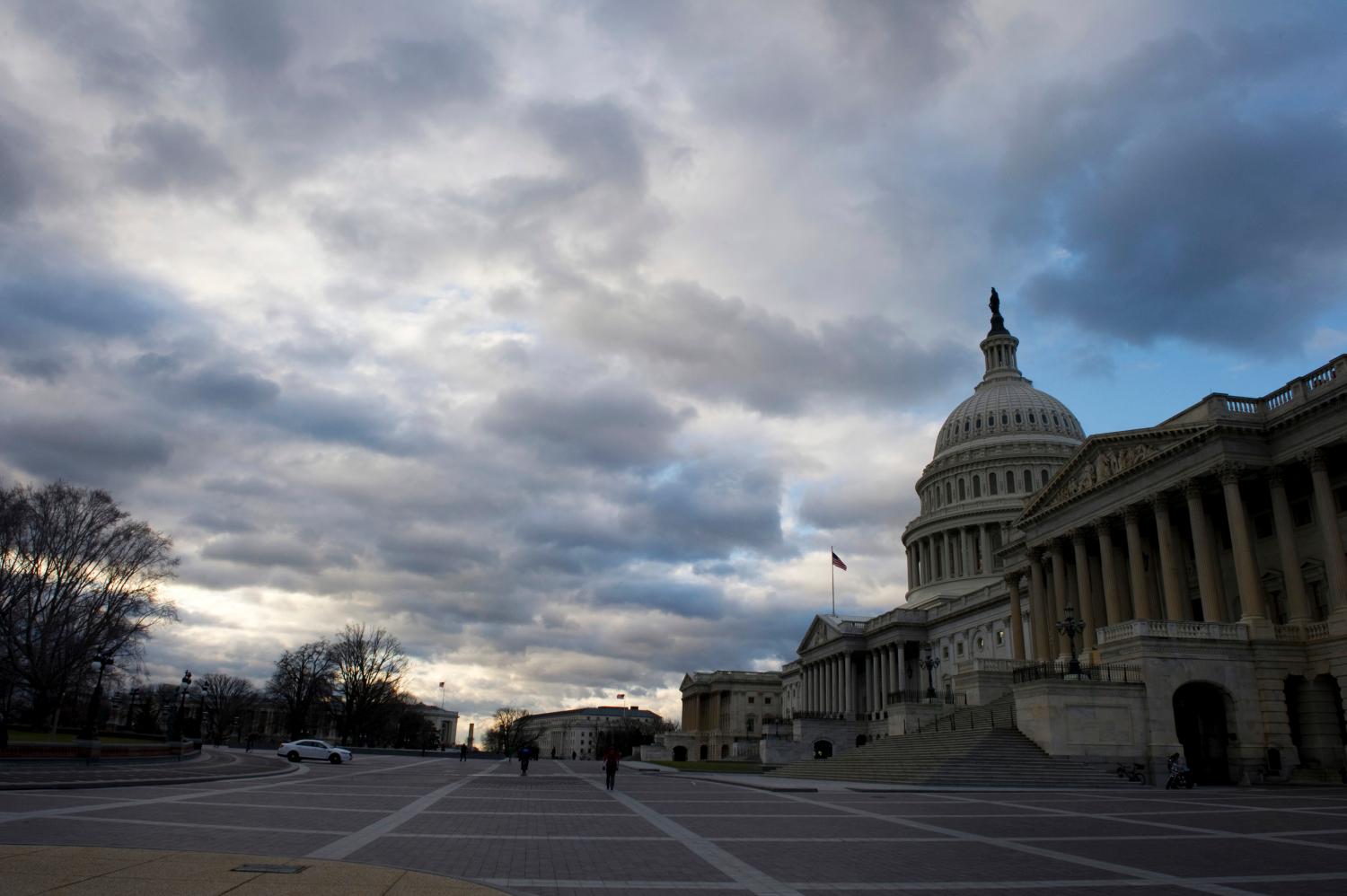The third Conference of the Parties to the United Nations Framework Convention on Climate Change will be held in Kyoto in early December. These upcoming negotiations, aimed at reducing future emissions of greenhouse gases, are almost certain to accomplish nothing. Failure is likely because the negotiations are focused on achieving rigid targets and timetables for emissions reductions in spite of the enormous uncertainties surrounding climate change. Even at this late hour, however, the conference could be salvaged. If negotiations could be shifted toward more flexible policies, such as a system of national permits and emissions fees or a reduction in world coal subsidies, the conference could mark the turning point at which climate negotiations evolve from unrealistic posturing toward a realistic framework for slowing carbon emissions.
POLICY BRIEF #27
In early December, negotiators from around the world will converge on Kyoto to try to formulate an international treaty that would solve the problem of climate change. Even at this late date, however, the preliminary proposals put forward by the United States, the European Union, and other major participants are very far apart. Few observers have much hope that a workable agreement will emerge. With exquisite irony, the Kyoto meeting is likely to contribute more to the climate change problem than to its solution: the fuels used to take negotiators to Kyoto will probably add more to world carbon emissions than the conference will be able to achieve in reductions.
Even though its prospects look bleak, the Kyoto meeting can still be salvaged. The conference could succeed if the focus of negotiations were allowed to shift slightly. At the moment, the aim of the conference is to produce a treaty in which participating nations agree to reduce their emissions to specific levels by specified dates in the future. In the lexicon of the climate change debate, this is known as targets and timetables. This focus makes it almost impossible for the Kyoto conference to achieve anything significant. A far better approach would be to focus on setting up an internationally coordinated system of specific, moderate, and credible steps to reduce growth of greenhouse gas emissions. Rather than emphasizing targets and timetables, in other words, the conference should focus on what Richard Cooper of Harvard University has called agreed actions.
The problem with a treaty based on targets and timetables is that it requires countries to agree to achieve fixed emissions goals no matter what the cost. Like everything else about climate change, these costs are very uncertain. A treaty based on targets asks countries to give up some of their national sovereignty and commit themselves to a policy of unknown and possibly very high cost. It is unrealistic to expect that the countries producing most of the world’s greenhouse gases, and the United States in particular, will ratify a target-based treaty of any significant stringency. As a result, as long as the Kyoto negotiations focus on targets and timetables, there are really only three possible outcomes: no agreement at all, a weak treaty with very loose targets, or a strict treaty that will never be ratified. In each case the agreement would do little to control climate change.
A treaty based on mutual actions, however, can be designed to guarantee that the costs of the treaty do not become excessive. For example, we have proposed a system of national permits and emissions fees that would reduce carbon dioxide emissions where it could be done for less than a specified international cost. Ratification would be far more likely for a climate change treaty in which costs are limited by design.
The most serious obstacle to an actions-based treaty is opposition by environmentalists. Environmental groups have opposed any suggestion that the Kyoto agreement include some sort of safety valve to cap the economic costs of the treaty. The reason is that an actions-based treaty would not guarantee how far emissions will be reduced. If abatement turns out to be inexpensive, the treaty would reduce emissions substantially. If abatement turns out to be expensive, however, less abatement will result. Ultimately environmental groups will have to choose between an actions-based policy with a realistic chance of being implemented and a targets-based policy that would look better on paper but could never be implemented and enforced.
What’s Wrong with Targets and Timetables?
The problem with targets and timetables is that almost every aspect of climate change involves enormous uncertainties. Climatologists disagree on how much warming will occur and when it will happen, and no one really knows how it will affect people and ecosystems. At the same time, economists are widely divided over how much it would cost to reduce emissions. In the face of this uncertainty, a treaty based on achieving fixed targets at specified dates is doomed to failure. Before countries could ratify the treaty they would have to be confident that they could achieve their targets at reasonable cost. The importance of costs is clear from the proposals now on the table. Countries with reason to believe that their costs will be low are arguing for tight targets. An example is the European proposal that emissions be reduced to 85% of 1990 levels by 2010. Countries worried that their costs will be high are arguing for looser targets. For example, the U.S. proposes to reduce emissions to 1990 levels by 2008 to 2012. Or they argue for a differentiated system, such as the one proposed by Australia, in which some countries would have tighter targets than others. All of these proposals have such major flaws that it is hard to believe they are intended to be taken seriously. The European position is so stringent that it has absolutely no chance whatsoever of being ratified by the United States. The U.S. proposal, on the other hand, is so vague that it would accomplish nothing. It provides a four-year window—the beginning of which is a decade in the future—for achieving the emissions target. It provides little indication of how the target would actually be achieved, apart from a vague statement that some sort of system of tradable permits would be designed during the next decade. Since the target is at least two U.S. administrations in the future, each of which would have the opportunity to renegotiate or renege on the treaty, it is hard to imagine that it will do much to spur U.S. firms and consumers to reduce energy consumption. The Australian proposal is so complicated that it could have come straight out of a Rube Goldberg drawing. It would classify countries according to six separate criteria before setting emissions targets. Essentially, it would amount to setting emissions targets on a country-by-country basis.
These proposals are too stringent, too vague, or too complicated to form the basis of a realistic climate change policy. They can only lead to a breakdown of negotiations or the adoption of a policy that ultimately collapses under its own infeasibility or inadequacy. If the Kyoto meeting is to accomplish anything of significance, it is time to shift the focus of negotiations away from targets and timetables.
What Can Still be Done in Kyoto?
No matter what happens in Kyoto, the climate change problem is not going to go away. It is quite clear that human activity is raising global concentrations of carbon dioxide. While climatologists disagree about how much warming will occur and when it will happen, virtually no one seriously suggests that we can emit as much carbon dioxide as we want into the atmosphere without any adverse consequences. Sooner or later, the world is going to have to start dealing with climate change. Given that emissions are rising rapidly in spite of voluntary abatement efforts on the part of developed countries, it would be prudent not to wait too long.
The best outcome from the Kyoto conference would be an agreement that could be the starting point for a long-term international climate change policy. An ideal agreement would have these features:
It should have a realistic chance of being ratified. In practice, this would mean that it must impose low and limited costs.
It should be specific and transparent. Firms and households should know exactly how the policy will work and when it will take effect.
It should be credible. It must be clear that any provisions of the treaty that would take effect in the future will actually be implemented. More specifically, the treaty must not be so draconian that future governments are likely to renege on it.
It must be widely implemented. All major carbon emitters must participate in order to avoid making the problem worse by merely shifting carbon-intensive activities around.
The treaty should be flexible enough to be adjusted as new information becomes available.
It should achieve emissions reductions at the minimum possible cost—both to companies and households cutting emissions, and to those implementing and administering the program.
Finally, the agreement should set up a decentralized system which respects national autonomy and contains incentives for countries to enforce it.
National Permits and Emissions Fees
One policy that satisfies these criteria is a system of national permits and emissions fees for carbon dioxide. Under this system, all users of primary fossil fuels would be required to own permits equal to their total emissions of carbon dioxide. Countries would be allowed to distribute a specified number of permits to their domestic users in any way they like, including handing them out for free. Additional permits could be purchased from each government at a stipulated international price, say $US 10 per ton. Because the total number of permits can rise if abatement turns out to be expensive, the policy has a built in safety valve that would limit the economic damage that the policy could inflict. Since the policy does not focus on achieving a specified target at any cost, it would be far more likely than a more rigid approach to be ratified.
Once an industry receives its initial allocation of permits it would have to decide whether to buy additional permits, sell some of its allocation, or stay with exactly the number it was given. If it does not buy or sell permits, it can continue with its existing practices at no additional cost. If it needs to increase its carbon-emitting activities, however, it would have to buy additional permits at a price of $10 per ton, giving it a clear incentive to avoid increases in emissions. At the same time, if the firm could reduce its emissions, the permit system would give it a strong incentive to do so: Avoided emissions could be sold on the permit market at a price of $10 per ton. For example, if an electric utility could shift some of its load from coal to natural gas for a cost of $6 per ton of carbon, it could emit less carbon and make a profit of $4 per ton by selling its excess permits. Indeed, many firms have claimed they are willing to undertake low-cost carbon abatement. The permit system we propose will reward firms for these endeavors. The more effort a firm puts into reducing carbon emitting activities at low cost, the higher its profits will be.
The same price will be charged for each new permit in each country as well as for any permits that are traded in domestic permit markets. Thus, the marginal cost of reducing carbon emissions will be equalized within and across all countries that participate. This makes the system efficient because the cheapest emissions reductions will be undertaken first. Environmentalists and engineers often argue that many low-cost options are available for reducing energy demand. If so, these low-cost options will be exploited under this policy, and without needing to be specifically identified in advance by the government. On the household side, for example, the increase in energy prices will encourage households to demand more energy-efficient vehicles and appliances.
The policy contains built-in mechanisms to encourage enforcement. Governments will have an incentive to monitor the system because they will be able to collect revenue from selling permits. Firms will have an incentive to monitor each other because any cheating by one firm would put its competitors at a disadvantage and would also affect the value of permits held by other firms.
The system is flexible and decentralized. New countries can join by setting up their own permit system and agreeing to charge the stipulated world price for additional permits. The system could also be extended to include other types of greenhouse gases and to encourage activities that are net sinks of carbon. Farmers, for example, could be given emissions permits to compensate them for improving land use, and the permits could then be sold on the domestic permit market.
Transfers associated with the permit system are largely between firms or between firms and households, rather than between the private sector and the government. It also minimizes transfers across borders, avoiding serious economic and political problems. Unlike the experience of the 1970s, increases in energy prices under this policy would not lead to massive transfers of wealth between countries.
The policy also could be revised easily as more information becomes available. After setting up the system and agreeing on the price of permits, participating countries could meet every five years to evaluate the extent to which carbon emissions have been abated as well as to re-evaluate the extent of climate change and its consequences. If it becomes clear that more action is required, the permit price could be raised. If climate change turns out to be less serious than it appears today, the permit price could be lowered. To minimize the costs of these price changes, future markets could be developed in permits so that risks are effectively shared.
Overall, the advantage of the permit and fee system over targets and timetables is simply that it is far more practical. It is ratifiable because it limits the cost of compliance and does not require governments to commit themselves to achieving a given target at any cost. It is transparent to households and firms because it spells out exactly how the policy will work, rather than specifying the target and leaving the policy undefined. It is more credible than a targets and timetables policy because it is not so draconian that countries will be tempted to renege, and because the revenue from selling permits will give governments an incentive to enforce it. Moreover, because it contains a built-in mechanism for limiting economic costs, the risk of setting ambitious emissions targets—which could significantly reduce economic growth if abatement proves to be expensive—is eliminated. This would remove the single most important obstacle to reaching a realistic international climate policy. (For more information about a policy of national permits and emissions fees, please refer to our Brookings Policy Brief from June 1997.) This approach has also been endorsed by Resources for the Future.
Removing Coal Subsidies
A second policy involving coordinated actions rather than rigid targets is eliminating subsidies to coal production. As shown by Anderson and McKibbin (1997), global coal markets are significantly distorted by subsidies. These distortions are similar in nature and magnitude to distortions in global agricultural markets. In the European Union in the early 1990s, the subsidy to producers (technically the producer subsidy equivalent) was estimated to have averaged 163 percent of the border price for coal. For comparison, the rate on agricultural products was 90 percent. During the 1987-93 period, support for farmers in Europe was estimated to be $11,400 per year compared with two to four times that figure for coal miners. McKibbin and Anderson estimate that the cost, per coal miner, of coal subsidies is more than $100,000 in France, $90,000 in Germany and Belgium, and $38,000 in the United Kingdom. In fact, subsidies to the coal industry in Europe far exceed subsidies to agriculture. We estimate that removing such large distortions in Europe and Japan would reduce global carbon emissions by 5 percent relative to business as usual.
In developing countries, the distortions in coal markets are quite different. Just as in agriculture in these economies, producers of energy are taxed in order to provide subsidies to energy consumers. Indeed, coal prices in many developing countries and in the former Soviet Union have been grossly underpriced, explaining the high consumption of energy in many of these nations. Prices more than 50 percent below world prices are common. Removal of these distortions, together with the distortions in the Organization for Economic Co-Operation and Development economies, were estimated by McKibbin and Anderson to reduce global carbon emissions by 8 percent relative to business as usual. This is on the order of magnitude that we estimate would result from a stabilization of carbon emissions in industrial countries at 1990 levels by 2010. The additional benefit of this type of policy is that it is also relatively low cost because there are economic benefits from allocating resources more efficiently.
Conclusion
Negotiations leading up to the Kyoto conference in December have been focused on establishing rigid targets and timetables for reducing carbon dioxide emissions. Because of the enormous uncertainties associated with climate change, this approach is unrealistic and has led to a stalemate in negotiations. There is still time, however, to produce a constructive agreement in Kyoto if the focus can be changed from targets and timetables to more practical policies. One such policy would be to set up a system of national permits and emissions fees for carbon dioxide; another would be to eliminate coal subsidies. Either of these would be a constructive, cost-effective way to address the problem of climate change. It is imperative that negotiators consider realistic options such as these, for failure at Kyoto would set back the chance of addressing climate change by a decade or more.
For related documents, see:
Anderson, K. and W. McKibbin “Reducing Coal Subsidies and Trade Barriers: Their Contribution to Greenhouse Gas Abatement” Brookings Discussion Paper in International Economics, 1997 The Brookings Institution, Washington, D.C.
Cooper, R., A Treaty on Global Climate Change: Problem and Prospects, October 1996.
Kopp, R., R. Morgenstern, and W. Pizer, Something for Everyone: A Climate Policy that Both Environmentalists and Industry Can Live With, September 29, 1997, Resources for the Future, Washington, DC.
McKibbin, Warwick J. and Peter J. Wilcoxen “A Better Way to Slow Global Climate Change,” Brookings Policy Brief, June 1997, no.17.
The Brookings Institution is committed to quality, independence, and impact.
We are supported by a diverse array of funders. In line with our values and policies, each Brookings publication represents the sole views of its author(s).




